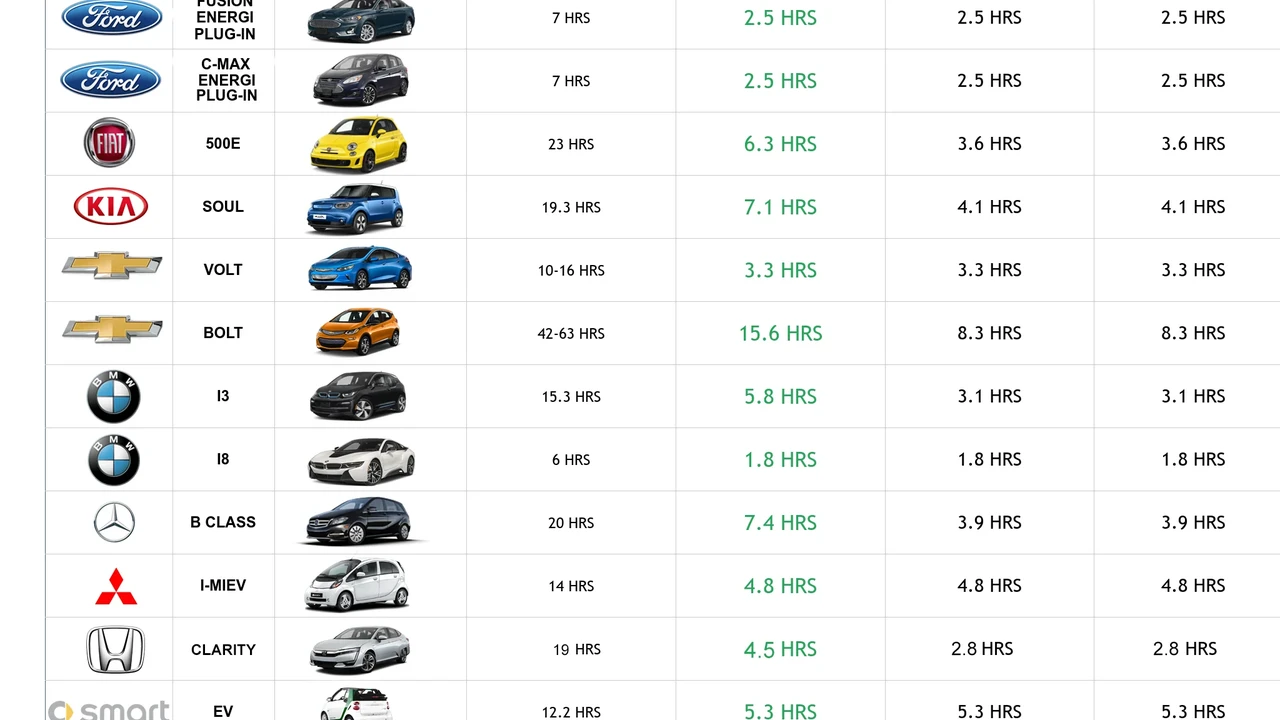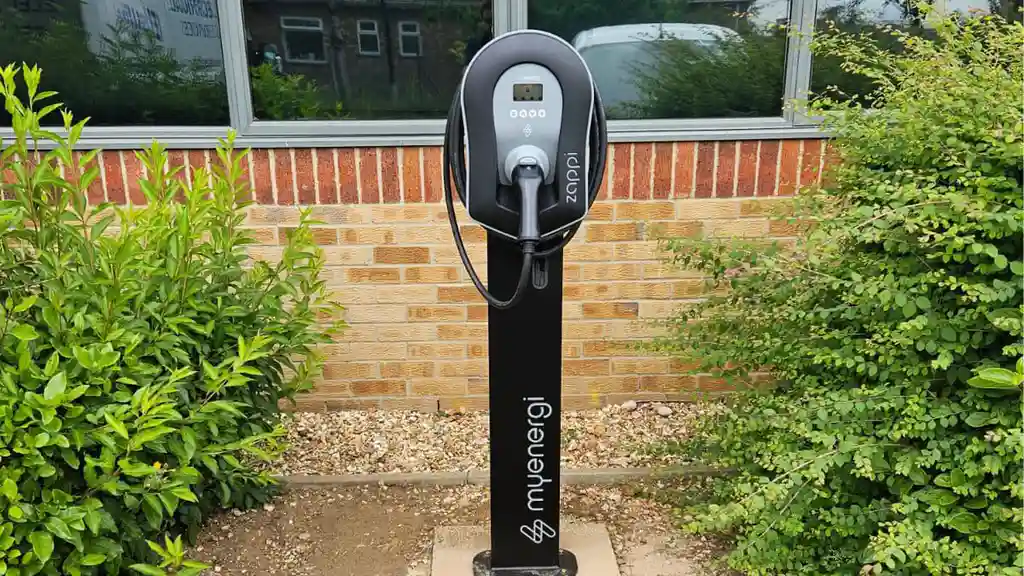EV Charging Speeds: A Comprehensive Guide for New Owners

New to EV charging? This guide provides a comprehensive overview of EV charging speeds and levels. Learn about Level 1, Level 2, and DC fast charging, and how to choose the right charging option for your needs. Understand the time it takes to charge your EV.
Understanding EV Charging Levels Level 1 Level 2 and DC Fast Charging Explained
So, you’ve got your shiny new electric vehicle. Congratulations! One of the first things you'll need to wrap your head around is charging. It’s not as simple as pulling up to a gas pump, but it’s also not rocket science. Let's break down the different EV charging levels, what they mean, and which one might be right for you.
Level 1 Charging The Slow and Steady Approach
Level 1 charging is the most basic type of EV charging. It uses a standard 120V AC outlet, the kind you have all over your house. Think of it like plugging your phone into the wall. It’s slow, but it’s convenient because you don’t need any special equipment. You just plug your EV into a regular outlet using the charging cable that comes with the car.
Pros:
- No special equipment needed
- Available anywhere there's a standard outlet
- Least expensive option
Cons:
- Very slow charging speeds
- Limited range added per hour of charging
- Not suitable for daily charging for most EV owners
Typical Charging Speed: You can expect to add about 3-5 miles of range per hour of charging. This means it could take 20-30 hours to fully charge a completely depleted EV battery.
Best Use Case: Level 1 charging is best for topping off your battery overnight if you don’t drive much, or as a backup option when other charging methods aren't available. It's also good if you have a plug-in hybrid with a smaller battery.
Level 2 Charging The Sweet Spot for Home Charging
Level 2 charging is a significant step up from Level 1. It uses a 240V AC outlet, similar to what you'd use for a clothes dryer or oven. This requires installing a dedicated Level 2 charger in your home, but the faster charging speeds are well worth it for most EV owners.
Pros:
- Significantly faster charging speeds than Level 1
- Suitable for daily charging for most EV owners
- Convenient home charging solution
Cons:
- Requires installation of a dedicated charger
- More expensive than Level 1 charging
- May require electrical upgrades to your home
Typical Charging Speed: You can expect to add about 20-30 miles of range per hour of charging. This means you can fully charge your EV overnight, typically in 6-8 hours.
Product Recommendations:
- ChargePoint Home Flex: A popular and reliable Level 2 charger with adjustable amperage and Wi-Fi connectivity. Price: Around $700.
- JuiceBox 40: Another excellent option with smart features and a user-friendly app. Price: Around $650.
- Wallbox Pulsar Plus: A compact and stylish charger with a great reputation for performance. Price: Around $600.
Usage Scenarios: Level 2 charging is ideal for daily home charging. You plug in your EV when you get home from work, and it's fully charged by morning. It’s also common at workplaces and public charging stations.
Product Comparison:
| Charger | Amperage | Smart Features | Price |
|---|---|---|---|
| ChargePoint Home Flex | 16-50A | Wi-Fi, App Control, Energy Monitoring | $700 |
| JuiceBox 40 | 40A | Wi-Fi, App Control, Voice Control | $650 |
| Wallbox Pulsar Plus | 40A | Bluetooth, App Control, Compact Design | $600 |
DC Fast Charging The Road Trip Savior
DC Fast Charging (also known as Level 3 charging) is the fastest way to charge an EV. It uses direct current (DC) electricity, which bypasses the EV's onboard charger and delivers power directly to the battery. This allows for much faster charging speeds, making it ideal for road trips and situations where you need a quick charge.
Pros:
- Extremely fast charging speeds
- Ideal for road trips and quick charging needs
Cons:
- Not available for home charging
- More expensive than Level 1 or Level 2 charging
- Can potentially cause faster battery degradation with frequent use
Typical Charging Speed: You can typically add 100-200 miles of range in about 30 minutes. Some newer DC fast chargers can even deliver faster speeds.
Product Recommendations (for identifying stations):
- Electrify America: One of the largest DC fast charging networks in the US.
- Tesla Supercharger Network: Exclusively for Tesla vehicles, offering fast and reliable charging.
- EVgo: Another major DC fast charging network with stations across the country.
Usage Scenarios: DC fast charging is best used when you're on a road trip and need to quickly replenish your battery. You'll find these chargers at highway rest stops, shopping centers, and other public locations.
Choosing the Right Charging Option For Your Needs EV Charging Cost Comparison
So, which charging level is right for you? It depends on your driving habits, budget, and where you live. Here's a breakdown to help you decide.
Factors to Consider When Choosing a Charging Option
- Daily Driving Distance: How many miles do you typically drive each day? If it's a short commute, Level 1 or Level 2 charging might be sufficient. If you drive long distances, you'll want Level 2 or access to DC fast charging.
- Home Charging Availability: Do you have access to a garage or driveway where you can install a Level 2 charger? If you live in an apartment, you might need to rely on public charging options.
- Budget: Level 1 charging is the least expensive, but it's also the slowest. Level 2 charging requires an investment in a charger and installation. DC fast charging is the most expensive per kWh.
- Charging Speed Requirements: How quickly do you need to charge your EV? If you need to quickly replenish your battery on the go, DC fast charging is the only option.
Cost Comparison Level 1 Level 2 and DC Fast Charging
Let's break down the costs associated with each charging level.
- Level 1 Charging: The cost is primarily the electricity you use. Assuming an average electricity cost of $0.15 per kWh and an EV efficiency of 3 miles per kWh, it would cost about $0.05 per mile to charge.
- Level 2 Charging: In addition to the electricity cost, you'll need to factor in the cost of the charger and installation. A Level 2 charger typically costs between $600 and $800, and installation can range from $500 to $1500 depending on your home's electrical setup. Assuming a lifespan of 5 years for the charger, the total cost per mile would be slightly higher than Level 1, but the convenience is worth it for most EV owners.
- DC Fast Charging: DC fast charging is typically priced per minute or per kWh. The cost can range from $0.30 to $0.50 per kWh. This translates to a higher cost per mile compared to Level 1 and Level 2 charging. However, it's the only option for quickly replenishing your battery on the go.
Tips for Maximizing EV Charging Efficiency Battery Preconditioning and Optimal Charging Practices
Getting the most out of your EV charging experience involves more than just plugging in. Here are some tips to maximize efficiency and extend your battery life.
Battery Preconditioning Warming Up Your Battery for Optimal Performance
Many EVs offer a feature called battery preconditioning. This allows you to warm up or cool down your battery before you start driving. Preconditioning can improve battery performance, especially in cold weather, and can also increase your range.
How to Use Battery Preconditioning: Consult your EV's owner's manual for instructions on how to activate battery preconditioning. Typically, you can schedule preconditioning through your EV's infotainment system or mobile app.
Optimal Charging Practices Extending Your Battery Life
- Avoid Overcharging: Try to avoid charging your battery to 100% regularly. It's generally recommended to keep your battery between 20% and 80% for optimal lifespan.
- Avoid Deep Discharges: Similarly, avoid letting your battery completely drain to 0%.
- Charge Regularly: It's better to charge your EV more frequently for shorter periods than to wait until the battery is almost empty.
- Use a Timer: If you're using Level 1 or Level 2 charging, consider using a timer to charge during off-peak hours when electricity rates are lower.
- Keep Your Battery Cool: Avoid parking your EV in direct sunlight for extended periods, especially in hot weather.
Navigating Public EV Charging Stations Finding and Using Public Chargers
If you live in an apartment or don't have access to home charging, you'll need to rely on public charging stations. Here's how to find and use them.
Finding Public Charging Stations Using Apps and Online Resources
There are several apps and online resources that can help you find public charging stations.
Recommended Apps:
- PlugShare: A comprehensive app that shows the location of charging stations, availability, and user reviews.
- ChargePoint: The official app for the ChargePoint charging network.
- Electrify America: The official app for the Electrify America charging network.
- EVgo: The official app for the EVgo charging network.
- A Better Routeplanner (ABRP): Excellent for planning EV road trips, including charging stops.
Using Public Charging Stations Payment Methods and Etiquette
- Payment Methods: Most public charging stations require payment through a mobile app or RFID card. Some stations also accept credit cards.
- Charging Etiquette: Be mindful of other EV owners. Don't leave your car plugged in longer than necessary, and move your car promptly when it's finished charging.
Future of EV Charging Wireless Charging and Emerging Technologies
The world of EV charging is constantly evolving. Here's a glimpse into the future of EV charging technologies.
Wireless Charging The Convenience of Contactless Charging
Wireless charging is an emerging technology that allows you to charge your EV without plugging in. You simply park your car over a charging pad, and the battery charges wirelessly.
Benefits of Wireless Charging:
- Convenience: No need to plug in cables.
- Weatherproof: No exposed connectors to worry about.
- Automation: Potential for automated charging in parking garages and other locations.
Emerging Technologies Battery Swapping and Ultra-Fast Charging
- Battery Swapping: Instead of charging the battery, you simply swap it out for a fully charged one. This can be done in a matter of minutes.
- Ultra-Fast Charging: New charging technologies are being developed that can deliver even faster charging speeds, potentially adding hundreds of miles of range in just a few minutes.
:max_bytes(150000):strip_icc()/277019-baked-pork-chops-with-cream-of-mushroom-soup-DDMFS-beauty-4x3-BG-7505-5762b731cf30447d9cbbbbbf387beafa.jpg)




 for EVs: Shielding Your Paint.webp)

